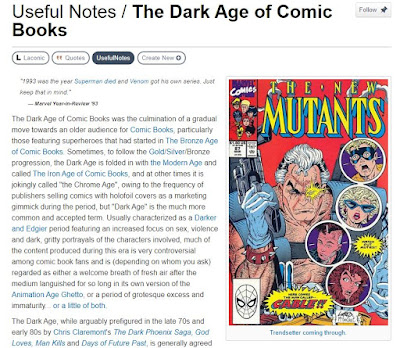Marvel Comics
Issue 5, December 1988
Marvel published some really bad comics in the late 80s and early 90s, but few (if any) were so inane as 'Wolfpack'.
First marketed as a Marvel Graphic Novel (No. 31) in August 1987, Marvel's editorial staff gave writer Larry Hama and artist Ron Wilson the go-ahead to turn the concept into a limited-run series of 12 issues (August 1988 - July 1989).
The Wolfpack are five New York City teens (muscle man Slag, martial arts expert Rafael, gymnast Sharon, stealth operative 'Slippery Sam', and disABLED wheelchair-kid 'Wheels') who dedicate themselves to fighting an evil organization known as The Nine. Minions of The Nine are responsible for the crime and poverty in the South Bronx neighborhood where the Wolfpack lives.
Writer Hama (who later turned the chore over to Joe Figueroa) had a talent for (unintentionally) showcasing his cheesy interpretation of Ghetto culture. The Wolfpack seem to be modeled on the extras appearing in Michael Jackson's 1987 video 'Bad', and their interpretation of city life on the mean streets of the Bronx has so many cringe-worthy moments that it becomes a self-parody. Like this Kid Addicted to Crack:
Artist Ron Wilson (who is black) contributed to the storylines as the series went on, but even making allowances for his having to adhere to the Comics Code and Marvel's editorial policies, he maintains the cheesiness. It doesn't help matters that his artwork for 'Wolfpack' is very mediocre, looking as if first draft sketches were hurriedly passed on to the inkers with no additional refinement.

































































.jpg)
.jpg)






















